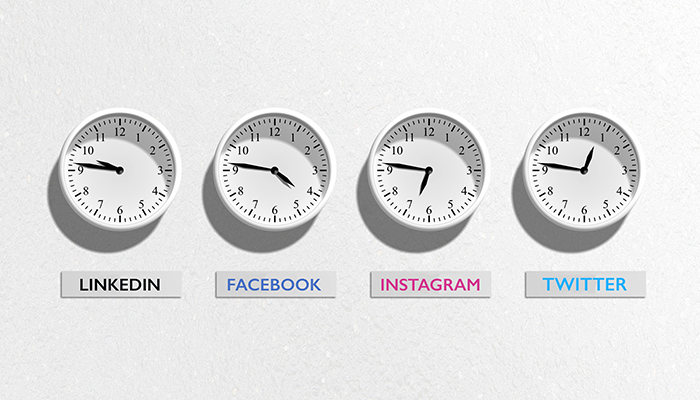Expert view: When are the best times to be posting on social media?
Mon 6th Jun 2022 by Katrina Bell

Expert view: When are the best times to be posting on social media?
Knowing when your customers want to see your posts will not only inform what you communicate but produce a more enthusiastic level of engagement, says Katrina Bell.
If you were to believe Google, the answer as to when you should be posting to social media is a one-size-fits-all option. A quick search will generally suggest 10am Tuesday through Thursday with those times changing for each platform. And this largely ignores what type of content you are uploading.
I would posit that this advice is mostly nonsense and/or contradictory – in fact, such an approach is a bit like turning up to a fancy do in a cheap suit. Technically you are dressed properly, but you still stick out like a sore thumb.
However, if you can successfully answer these three questions, your timings will become a breeze.
1. How would you characterise your following?
Step one for any company is to decide which market should see which marketing – B2C will undoubtedly be more likely to view your posts at the platforms’ busiests times, however B2B customers' patterns are both more elusive and less predictable.
For instance, a showroom may be quietest at the end of a working day, which will inevitably mean those followers are catching up on industry news and partner updates in their downtimes. Installers could be more inclined to dip in and out throughout the day.
2. Are you suffering from ‘Please post this’?
When your social media practitioners are left out of the marketing planning and are treated simply as the mechanism of getting words and images on your platforms at your convenience, you lose an important strategic advantage. Different advertising and visibility pushes require early deliberation that is tailored to your audiences and your platforms. When all your publicity efforts are posted on all channels at the same time, you risk becoming too generic to be beneficial. Everyone needs a seat at the table from the get go.
3. Are there signs of frequency flooding?
By not creating an overall business-wide strategy posting more than three times a week may well risk trying your followers' patience, and even dissuade them from their natural inclination to engage. Direct benefits such as competitions or offers can be considered mostly exempt from this. When was the last time you actually counted how many times you post, let alone thought about whether you are consistent in your timings? All platforms include an element of recency to their algorithms, which basically means new is always given greater visibility. Posting too soon after an important update results in choking off the message too quickly. Which is why you need a posting schedule.
If you have committed to regarding your social media interactions as a multi-channel, multi-target exercise it’s a short step to using in-app reporting tools such as Facebook’s Business Suite, which can produce near-real-time analysis of when your audience is most active for specific types of content. If you’d prefer to amalgamate that data under one roof, there are any number of scheduling apps such as HootSuite or SproutSocial that can be connected to most platforms. Whatever works best for you – which is ultimately probably the best answer to when you should be posting on social media.
Tags: insight, features, social media, digital marketing, kitchens, bathrooms
Sign up to our newsletter
Crown Imperial – 5 ‘must have’ kitchen trends for 2026
Sun 21st Dec 2025


























